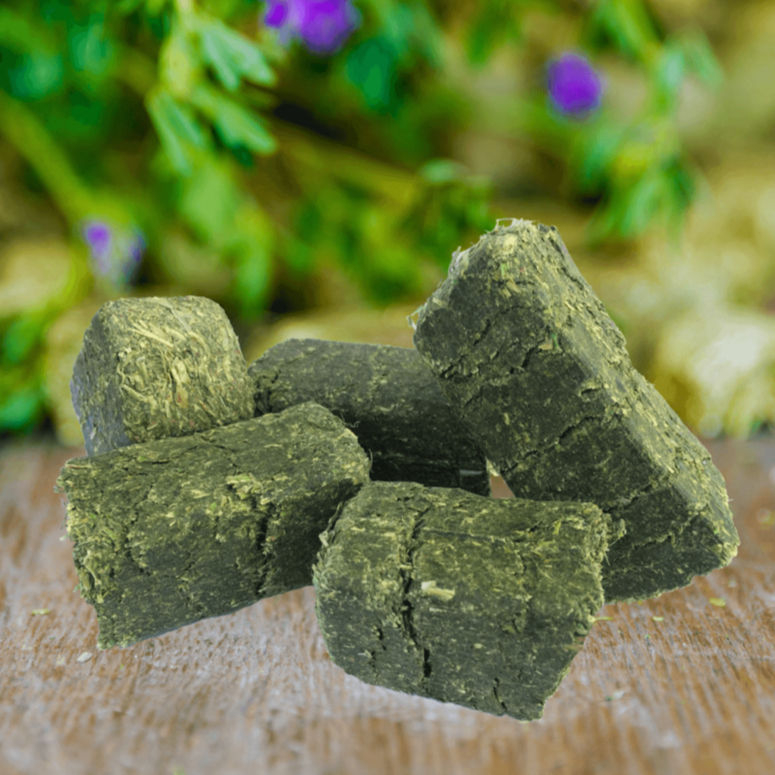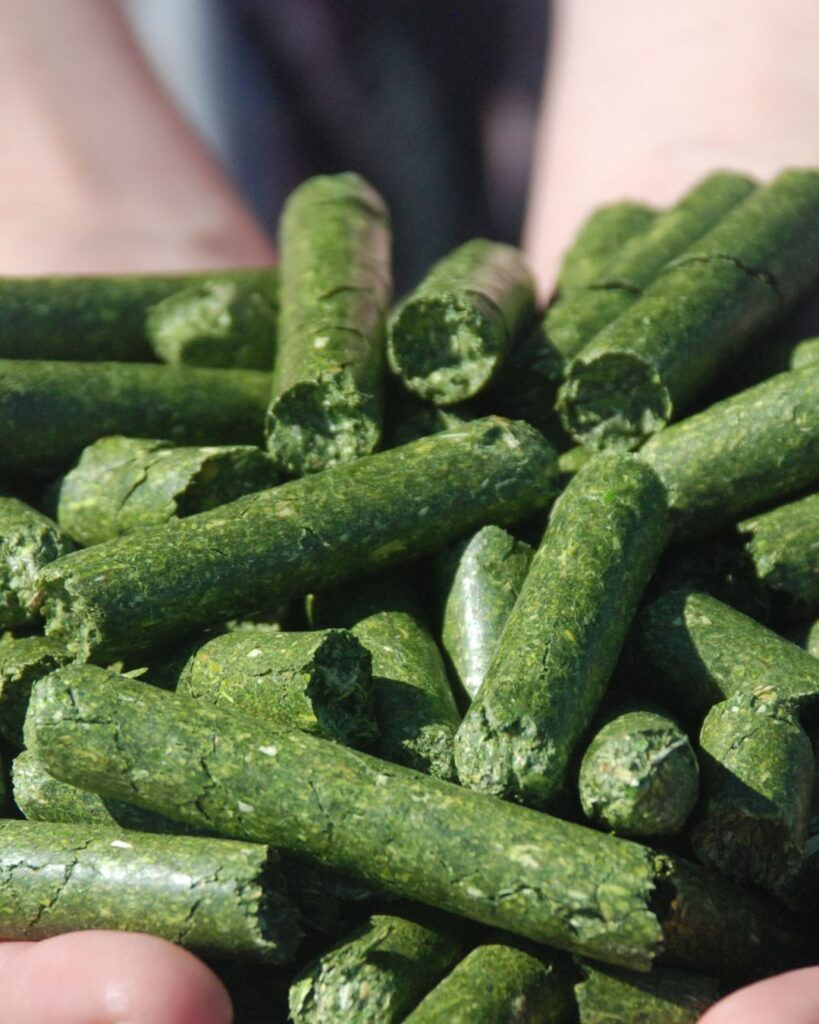Tips on Horse Nutrition
- McKenna Hines
- Jun 20
- 8 min read

Proper horse nutrition is foundational to maintaining a healthy, happy, and high-performing equine companion. Whether you're caring for a young foal, a competitive athlete, or a beloved retiree, understanding the principles of equine feeding is critical.
The following guide offers practical, research-backed tips to help you make informed feeding choices based on your horse’s needs, lifestyle, and environment.
Understand Your Horse’s Digestive System
Horses are non-ruminant herbivores with a highly specialized digestive system. Unlike ruminants like cows, horses ferment fiber in the hindgut, making fiber a crucial component of their diet. Feeding practices that respect this natural digestion process are vital for gastrointestinal health.
A diet high in quality forage supports fermentation and minimizes colic risk. Overloading the small stomach with grain or starchy feeds can lead to ulcers, impaction, and other issues. Horse nutrition should always prioritize fiber first.
Understanding the digestive mechanics helps inform feeding frequency and feed type. Small, frequent meals simulate natural grazing behavior and support stable energy levels throughout the day.
Because horses have a relatively small stomach, they require continuous access to roughage. This constant flow of fiber encourages motility and helps prevent metabolic issues common in stalled horses.
Good horse nutrition begins with feeding in a way that mirrors how horses evolved to eat—grazing slowly, steadily, and frequently throughout the day.
Base the Diet on High-Quality Forage

Forage should always be the foundation of a horse’s diet. Quality hay or pasture provides the bulk of the necessary fiber, energy, and protein for most horses, especially those in light to moderate work.
Hay selection depends on your horse’s activity level and health. Grass hays like timothy or orchard grass are suitable for easy keepers, while alfalfa may benefit horses needing more calories and protein.
Ensure forage is free from mold, dust, and weeds. Poor-quality hay can lead to respiratory issues, colic, or nutrient deficiencies. Lab testing is an excellent way to verify hay nutrient values.
Monitor hay consumption closely to avoid under- or overfeeding. On average, horses should consume 1.5–2.5% of their body weight in forage per day.
High-quality forage is the most important element of horse nutrition. Without a strong forage base, no supplement or grain can compensate for the nutritional gaps.
Tailor Horse Nutrition to Life Stage
Different life stages demand different feeding strategies. Foals, growing horses, pregnant mares, and seniors all have unique nutritional needs that must be met to support health and development.
Young horses require high-quality protein and a precise balance of calcium and phosphorus to ensure strong skeletal growth. Growth formulas can help deliver these in proper ratios.
Broodmares in the final trimester and during lactation have elevated demands for energy, protein, and minerals. Their diets must be carefully managed to support both the mare and the foal.
Senior horses may struggle to chew long-stem hay and digest nutrients effectively. Soaked feeds, pelleted forage, and complete senior rations help meet their changing needs.
Adapting horse nutrition to each life stage improves growth outcomes, reproduction success, and longevity—while reducing the risk of developmental or age-related conditions.
Evaluate Horse Nutrition based on Workload
Horses in different types of work require different amounts of energy and protein. A trail horse, a pasture pet, and a racehorse all have vastly different caloric needs.

For lightly worked horses, forage alone may suffice. Moderate to intense workloads typically require the addition of concentrates or high-fat feeds to meet energy demands.
Pay attention to how your horse responds to workload changes. Weight loss, fatigue, or poor recovery could indicate a need for different horse nutrition needs, maybe more calories or refined energy sources.
Feeds designed for performance horses often include added fat, amino acids, and controlled starch levels to provide energy without digestive upset.
By aligning your feeding plan with activity level, you can optimize horse nutrition while minimizing health risks such as ulcers or tying-up syndrome.
Balance Macronutrients Properly
Horses require a careful balance of carbohydrates, fats, and proteins to support overall health and performance. Imbalances can lead to energy deficiencies, weight gain, or metabolic stress.
Forage provides most of the necessary carbohydrates and fiber. Additional energy can be supplied through fat sources like vegetable oil, rice bran, or flaxseed.
Protein quality is just as important as quantity. Lysine is the most limiting amino acid in equine diets, so choose feeds with adequate lysine for growing and performance horses.
Avoid excessive starch and sugar, especially for horses prone to laminitis, insulin resistance, or excitability. Low-NSC diets help manage these conditions effectively.
Balanced horse nutrition supports muscle development, stamina, and healthy body weight, particularly when feeding high-demand horses or those with health challenges.
Don’t Overlook Micronutrients
Vitamins and minerals play crucial roles in immune function, metabolic health, and tissue repair. Even with good forage, many horses need supplementation to meet all micronutrient needs.

Salt should always be available, ideally as free-choice loose salt. Electrolyte mixes may be necessary during hot weather or periods of heavy sweating.
Trace minerals like selenium, zinc, and copper are commonly deficient in many regions. A vitamin-mineral supplement or fortified feed can fill those gaps.
Over-supplementing can be dangerous, especially with fat-soluble vitamins like A and D or minerals like selenium. Always follow dosage guidelines and consider forage analysis.
Micronutrients are an often underestimated part of horse nutrition, but their impact on hoof quality, coat health, and resilience is profound.
Feed According to Body Condition
Assessing your horse’s body condition score (BCS) is essential for adjusting their diet appropriately. Scores range from 1 (emaciated) to 9 (obese), with a healthy range typically between 4 and 6.
Underweight horses may need calorie-dense additions such as beet pulp, alfalfa, or commercial weight-gain formulas. Conversely, easy keepers benefit from restricted portions and low-NSC hay.
Monitor weight and BCS monthly using photos, weight tapes, or a scale. Adjust rations gradually to prevent metabolic stress.
Avoid the “eye test” alone—muscle loss or fat pads can be misleading indicators. Use both visual and tactile evaluation to gauge true condition.
Maintaining optimal weight is a cornerstone of horse nutrition, influencing everything from fertility to soundness and athletic ability.
Ensure Consistent Access to Clean Water
Water is the most critical yet often overlooked nutrient in equine diets. Horses typically drink 5–10 gallons of water per day, more during hot weather or intense work.

Dehydration can lead to colic, reduced feed intake, and impaired performance. Always provide clean, fresh water—preferably in a location that’s easy to access and safe.
In winter, make sure water doesn’t freeze. Heated buckets or insulated troughs encourage drinking during cold spells.
Offer soaked feed such as beet pulp or alfalfa cubes to boost hydration, especially for horses that don’t drink enough. Check out this article to learn about the pros and cons of alfalfa.
Hydration is a central part of horse nutrition—without water, even the best feeding plan will fall short.
Feed by Weight, Not Volume
Using a scoop to estimate feed amounts can lead to dangerous inconsistencies. Feeds vary greatly in density, and what looks like the same volume can differ significantly in actual weight.
Invest in a kitchen or hanging scale to weigh feed portions. This ensures your horse receives the intended amount of nutrients, calories, and supplements.
For hay, aim to feed 1.5–2.5% of your horse’s body weight daily. For grain or concentrate, follow manufacturer guidelines and base adjustments on body condition and workload.
Weighing feed is especially important for horses with special needs, such as those with metabolic issues or on weight management programs.
Precision in feeding practices improves horse nutrition outcomes by ensuring accuracy, balance, and better budgeting of resources.
Transition Feeds Gradually
Abrupt feed changes can disrupt the hindgut microbiome and lead to colic or diarrhea. Always introduce new hay, grain, or supplements over a period of 7–10 days.
Begin by mixing small amounts of the new feed with the current ration, gradually increasing the proportion. This allows the gut to adjust without overwhelming digestive function.
When changing hay sources, be equally cautious. Even variations between cuttings of the same hay can affect digestion.
Monitor your horse closely during transitions for signs of discomfort, such as reduced appetite, gas, or changes in manure consistency.
Smooth transitions help maintain stable horse nutrition and reduce the stress that can come with dietary disruptions.
Use Supplements Wisely
Supplements can enhance a feeding program, but only when they’re necessary and well-chosen. Avoid feeding multiple products with overlapping ingredients.

Choose supplements with transparent labeling, proven ingredients, and manufacturer-backed research. Avoid miracle claims and flashy marketing.
If your horse already receives a balanced commercial feed, additional supplements may not be needed unless addressing a specific condition (e.g., joint support, ulcers).
Consult with your vet or an equine nutritionist before introducing any new product. Over-supplementation can lead to imbalances and toxicity.
Strategic supplement use can improve horse nutrition in targeted ways—just make sure they’re solving real problems and not creating new ones.
Monitor Feeding Behavior
Changes in eating behavior can be an early warning sign of health issues. Horses that suddenly stop eating, drop grain, or show discomfort may have dental problems or ulcers.
Pay attention to how quickly your horse eats and whether food is being spilled or left behind. Watch for signs of guarding feed or aggression at mealtime.
Slow feeders can help regulate intake and promote natural grazing habits. They’re especially useful for horses prone to choking or overeating.
Regular dental exams, typically every 6–12 months, are critical to maintaining efficient feed use and comfort.
Feeding isn’t just about the food—it’s also about how the horse interacts with it. Observing behavior is a vital part of managing horse nutrition.
Adjust Seasonally
Your horse’s nutritional needs change with the seasons. In winter, more calories may be needed for warmth. In summer, electrolyte needs rise due to sweat loss.

Plan hay purchases in advance for winter, and offer shelter or shade to maintain appetite during extreme temperatures.
Pasture access varies seasonally, affecting forage availability and quality. Introduce spring grass gradually to avoid laminitis and monitor intake during lush periods.
Adjust feed to match activity levels. Horses typically work less in winter, so calorie needs may drop despite cold temperatures.
Seasonal changes require proactive management to keep horse nutrition consistent, safe, and supportive of changing environmental demands.
Manage Group Feeding Dynamics
In group settings, dominant horses may monopolize food, leaving submissive individuals underfed. Observe herd interactions and feed horses separately if necessary.
Use feeding stations or panels to ensure equal access. In pasture settings, consider spreading hay piles far apart to reduce competition.
Monitor each horse’s condition individually, especially in large groups. Subtle weight loss may go unnoticed until it becomes significant.
In stabled settings, ensure all horses are receiving the correct feed and supplements. Mistaken feedings can disrupt your nutritional strategy.
Group dynamics can undermine even the best plans. Adjustments may be needed to ensure that each horse receives the intended horse nutrition benefits.
Work with an Equine Nutritionist
Professional guidance can take the guesswork out of feeding. Nutritionists can evaluate forage, formulate custom plans, and address specific issues like metabolic disease, performance stress, or growth.
Forage testing is one of the most valuable services a nutritionist offers. This helps fine-tune mineral supplementation and avoid imbalances.
Horse nutritionists stay current on research, helping you avoid outdated feeding practices and capitalize on new knowledge.
Veterinarians also play a key role in diagnosing nutritional deficiencies or overages, especially in complex medical cases.
Collaborating with professionals ensures your horse nutrition plan is science-backed, balanced, and tailored to your horse’s unique needs.

Choose the Best for Your Horse—Choose RR Ranch
When it comes to horse nutrition, quality matters. All the planning, balancing, and supplementation mean little without a solid foundation of nutrient-rich forage.
That’s where RR Ranch comes in. Our premium alfalfa products are grown with care in Utah’s ideal climate, delivering consistent protein, minerals, and fiber your horse needs to thrive. CanterCraze says, “Speaking of digestibility, alfalfa is like the gateway to horse nutrition.”
Whether you’re supporting a growing foal, maintaining a senior horse’s weight, or fueling a high-performance athlete, RR Ranch provides the quality feed that sets your horse up for success.
With clean, nutritious hay and customer-focused service, RR Ranch makes it easy to build a reliable, healthy feeding program from the ground up.
Your horse deserves the best. Visit our website today and choose RR Ranch for forage you—and your horse—can trust.




Comments